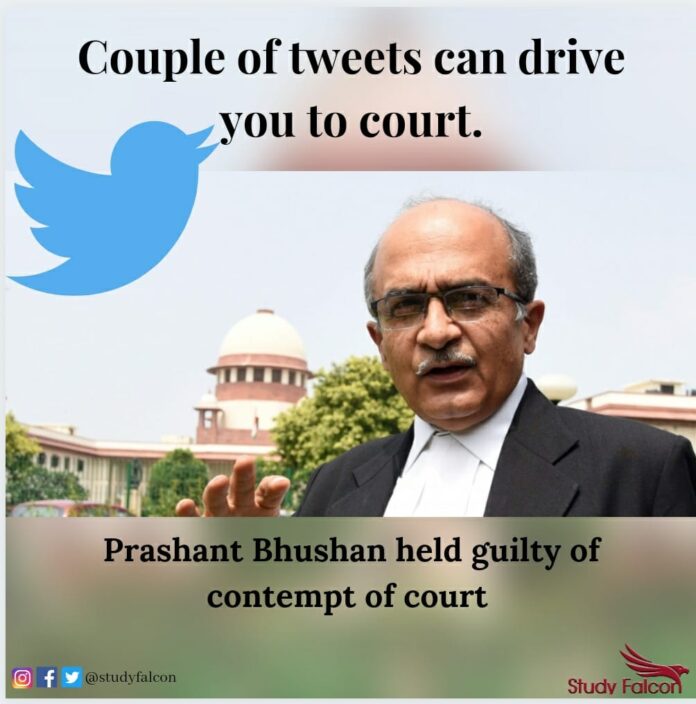A three-judge Bench of the Supreme Court on Friday found civil rights lawyer Prashant Bhushan guilty of criminal contempt by ‘scandalizing the court’.
The Bench headed by Justice Arun Mishra said when a “scheme” was on to damage public confidence in the judiciary, those interested in fearless justice should stand firmly. The court could not ignore the disrespect and disaffection created by the “scurrilous” tweets.

There are two specific allegations that Bhushan levels against the Supreme Court and its judges in the tweets: First that the last four CJIs have colluded with the Narendra Modi government to harm democracy in India since 2014 and second, that the Supreme Court remains shut down (when he tweeted) leaving citizens with no access to their fundamental right to justice. Bhushan’s two tweets apparently were serious enough to merit a 108-page response from the apex court. This is an overreaction and a self-defeating exercise. Social media has given every citizen, wise or otherwise, the power to vent their thoughts into the public domain on matters, all and sundry.

The judgment said punishing a lawyer was an extreme measure but nevertheless necessary to keep the “streams of justice pure, serene and undefiled”. Judiciary was the central pillar of Indian democracy. It was the duty of the court to punish to preserve its dignity, the judgment emphasised.
“If such an attack is not dealt with requisite degree of firmness, it may affect the national honour and prestige in the comity of nations,” the judgment written by Justice B.R. Gavai pointed out.

Prashant Bhushan and his History with the court
Facing charges of criminal contempt over his remarks in an interview to Tehelka magazine in 2009, Advocate Prashant Bhushan has told the Supreme Court that there is “no effective procedure” currently “to deal with corruption in the judiciary” and, therefore, lawyers raising such issues in public interest must fall within the ambit of free speech.
In written submissions to the court, he pointed out that the Supreme Court in the 1995 case, C Ravichandran Iyer vs Justice A M Bhattacharjee & Ors, had “indicated that members of the bar and others should not speak in public but use only the inhouse procedure which has been devised for receiving complaints against judges”.
Bhushan said he had already explained “that he had used the word corruption in a wide sense to include any act of impropriety other than merely financial corruption” and “therefore, to examine whether imputing corruption to a judge would amount to per se contempt, one would first need to examine as to what the word corruption has been normally understood to include”.
The court acknowledged, it reasoned that “any caricature of a judge calculated to lower the dignity of the court would destroy, undermine or tend to undermine public confidence in the administration of justice”. A defamatory publication concerning “the judge is a serious impediment to justice”.
The judgment said contempt, if not criminal contempt, was attracted if free speech was used to scandalise judges and the institution of administration of justice or undermine the authority or dignity of the Supreme Court or to shake public confidence in the judiciary.










